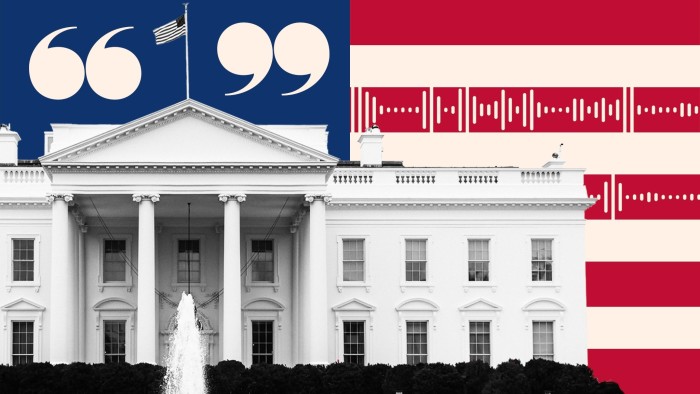High US childcare costs pose an election risk for Kamala Harris

The stories that matter on money and politics in the race for the White House
After 28-year-old Lino Paredes works his 11pm to 7am “graveyard shift” at the Wynn casino in Las Vegas, he rushes home to take his four-year-old son to daycare.
His wife works 9am to 5pm, so the couple pays $85 a day, or about 40 per cent of Paredes’s daily wage, so that he can get some sleep to be ready for his next shift.
Childcare costs in Nevada, a crucial swing state that could decide this year’s US presidential election, soak up a bigger share of household income than in any other state.
But voters are feeling the pain nationally, too, creating another potential headwind for Kamala Harris’s White House run unless she can offer a plan to bring costs down.
“I want the best for my kid so if someone can make childcare more affordable, that would be great,” Paredes said. “There’s a lot of us who need help.”
The plea from parents like Paredes comes as Harris puts the so-called care economy at the heart of her platform — and as her Republican rival, Donald Trump, blames her for high US living costs.
Harris has proposed more tax breaks for families with children and more affordable care for the elderly, among other ideas such as credits for first-time homebuyers, offering a sharp contrast with Trump's plan to slash taxes.
The Republican has made no specific pledges on childcare, but the right-wing Heritage Foundation’s Project 2025, a policy agenda that Trump has disowned despite the involvement of close aides, suggests eliminating Head Start, a federal programme to support childcare for low-income families. It calls instead for more funding to support at-home childcare.
Harris, now officially the Democratic party’s presidential candidate, has depicted Trump’s plans for families with children as a dangerous relic of the past.
“We are not going to let him end programmes like Head Start that provide pre-school and childcare,” she said during her speech at the Democratic party convention last week in Chicago. “America, we’re not going back,” she added, reprising her campaign slogan.
Making childcare cheaper would be a vote winner for Harris, polls suggest.
A recent poll by the First Five Years Fund showed that 82 per cent of Trump voters and 96 per cent of Democratic voters wanted their candidate to make childcare — which on average costs $11,582 a year, according to the non-profit Child Care Aware of America — more affordable.
“The left and Republicans have kids, and we’re all struggling to figure out how to make sure that they get daycare,” said Joseph Geevarghese, head of Our Revolution, a progressive advocacy group. “That’s what Harris and Walz have to run on.”
Curbing the costs would also be good for the economy by allowing more traditional carers to work in jobs outside the home, said analysts.
The US labour department last year estimated that if childcare support were as generous as in Germany or Canada, another 5mn American women could join the labour force, equating to more than $775bn in additional economic activity each year.
“This is an essential structural economic [issue] that is dampening the potential productivity and growth of the economy,” said Matthew Nestler, an economist at KPMG.
However, resolving the chronic labour shortages and bureaucratic hurdles that have pushed up childcare costs at twice the rate of inflation in the past 30 years will be difficult, experts said.
Many childcare centres have closed amid a dearth of workers in recent years, with almost 10 per cent fewer employees in the sector at the end of last year than before the pandemic.

Wages in the sector remain comparatively low. Childcare workers earned on average $15.42 an hour in May 2023, the latest available data, compared with $31.48 for employees in all other sectors.
“A lot of low-wage sectors had to increase pay in order to bring workers back” after the pandemic, said Melissa Boteach, vice-president of childcare and income security at the National Women’s Law Center Action Fund. “So you had childcare providers having to compete with Walmart and Amazon.”
Federal support currently comes through Head Start, grants and childcare vouchers for low-income families, as well as the child and dependant care tax credit.
But funding can be tricky to access for some carers, especially those working in the gig economy.
“One of the problems are that you have to provide six consecutive weeks of payslips,” said Gregory Brender, a senior officer at the Day Care Council of New York. Employment “has changed since the 90s”, when the legislation was enacted, he added.
Onerous zoning and other rules have also limited construction of facilities, leaving more than half of Americans living in a “childcare desert”, areas where many children have no access to care centres, according to the Center for American Progress.
If Harris wins the White House, fixing all those problems would require her to pass new legislation. Unless Democrats also win control of Congress in November, that could prove difficult.
There is cross-party support for boosting the tax credit, but critics say it mainly offers benefits to families that pay for childcare up front.
“This is really a policy that benefits middle- and upper-income families, not lower-income ones,” said Aaron Sojourner, an economist at the WE Upjohn Institute for Employment Research.
Have your say

Kamala Harris vs Donald Trump: tell us how the 2024 US election will affect you
Comments